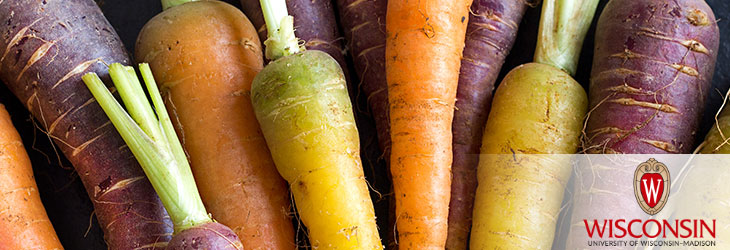Animals, Agriculture & Food

Teosinte-Crossed Corn Blocks GM Contamination, Preserves Organic Status
WARF: P140120US01
Inventors: Jerry Kermicle
The Wisconsin Alumni Research Foundation (WARF) is seeking commercial partners interested in developing a fertile corn line carrying genes from teosinte that could help prevent cross-pollination by genetically modified varieties.
Overview
Teosinte is a wild relative of maize that is native to Mexico and unable to grow in the United States. Although closely related, teosinte does not interbreed naturally with cultivated corn.
UW–Madison researchers previously discovered a gene cluster in teosinte that creates a genetic barrier between teosinte and corn, blocking cross-pollination (see WARF reference number P00005US). The researchers managed to breed this "cross-incompatibility" gene cluster into a corn variety, thus preventing it from being pollinated by other corn cultivars.
The teosinte gene cluster could be bred into traditional, non-genetically modified (non-GM) corn to block cross-pollination by other varieties. This would help segregate GM from non-GM corn while maintaining organic status.
UW–Madison researchers previously discovered a gene cluster in teosinte that creates a genetic barrier between teosinte and corn, blocking cross-pollination (see WARF reference number P00005US). The researchers managed to breed this "cross-incompatibility" gene cluster into a corn variety, thus preventing it from being pollinated by other corn cultivars.
The teosinte gene cluster could be bred into traditional, non-genetically modified (non-GM) corn to block cross-pollination by other varieties. This would help segregate GM from non-GM corn while maintaining organic status.
The Invention
The researcher has developed a new teosinte/W22 crossed corn line. The new line shows the best fertility phenotype to date while maintaining cross-incompatibility traits.
Applications
- The new corn line could be used in a crossbreeding program to create new commercially viable varieties.
Key Benefits
- Fertile and cross-incompatible
- Teosinte gene cluster was transferred to cultivated corn using classical breeding techniques, leaving corn eligible for organic status.
- May prevent unintentional contamination of non-GM corn by GM varieties
Stage of Development
The new line has been created and tested.
Additional Information
Related Technologies
Tech Fields
For current licensing status, please contact Emily Bauer at [javascript protected email address] or 608-960-9842